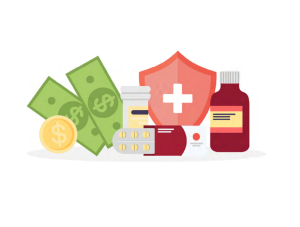In the vast landscape of American healthcare, pharmacies have undergone a remarkable transformation from humble corner stores to integral healthcare hubs. These establishments have evolved significantly, transcending their traditional roles as dispensers of medications to become crucial centers for comprehensive healthcare services and patient support. The metamorphosis of pharmacies in the USA mirrors the dynamic changes in healthcare delivery, technology, and the societal expectations placed upon them.
Origins and Early Pharmacy Practices

The history of pharmacies in the USA traces back to colonial times when apothecaries and drug dispensaries primarily compounded and dispensed medications. These early pharmacies were often small, family-owned shops, where pharmacists prepared medications based on physicians’ prescriptions or proprietary formulations. The corner drugstore was the quintessential neighborhood establishment, where people not only obtained their medicines but also sought health advice and remedies.
Shift towards Modern Pharmaceutical Practices

As the 20th century progressed, the landscape of American pharmacies began to shift. The early 1900s saw the standardization of medications and the emergence of regulation governing the pharmaceutical industry. Pharmacists increasingly focused on dispensing commercially manufactured drugs rather than compounding them in-house. This shift towards standardization and commercialization marked the beginning of pharmacies resembling the modern drugstores we recognize today.
Community Pharmacies: Pillars of Neighborhood Health

Community pharmacies have long been the cornerstone of accessible healthcare in the USA. These pharmacies evolved into more than just places to pick up prescriptions. They became centers for health advice, over-the-counter medications, and medical supplies. Pharmacists assumed a more active role in patient care, providing counseling on medication adherence, disease management, and preventive healthcare measures. Their accessibility and community integration made them pivotal in providing primary healthcare services.
Technological Advancements and Digital Integration

The turn of the 21st century ushered in an era of rapid technological advancement, significantly impacting pharmacy practices. Automated prescription filling systems, electronic health records (EHRs), and online prescription refills revolutionized how pharmacies operated. These technological upgrades streamlined processes, enhanced accuracy, and improved patient convenience. Furthermore, the rise of telemedicine and digital health platforms extended the reach of pharmacies, enabling remote consultations and medication management services.
Expansion of Services Beyond Medication Dispensing

The evolution of pharmacies has seen a notable expansion in the scope of services offered. Beyond dispensing medications, modern pharmacies provide an array of clinical services. They offer immunizations, health screenings, medication therapy management, and chronic disease management programs. Pharmacist-led initiatives for smoking cessation, weight management, and diabetes education have become commonplace, underscoring their role in promoting public health and disease prevention.
Collaborative Healthcare Models

Pharmacies have increasingly embraced collaborative healthcare models. Partnerships with healthcare providers, hospitals, and insurance companies have led to integrated care approaches. Pharmacists work closely with physicians and other healthcare professionals in team-based care models. This collaboration enhances patient outcomes through coordinated medication management, reducing adverse drug events and improving overall health.
The Pandemic’s Impact on Pharmacies

The COVID-19 pandemic brought pharmacies to the forefront of healthcare delivery. Pharmacies became vital in administering vaccines, conducting testing, and offering education on preventive measures. The pandemic accelerated the adoption of telepharmacy and home delivery services, ensuring continuity of care for patients while maintaining safety protocols.
The Future of Pharmacies: Healthcare Hubs

Looking ahead, pharmacies in the USA continue to evolve into comprehensive healthcare hubs. They are expected to play an increasingly significant role in providing accessible and personalized care. With advancements in precision medicine, pharmacogenomics, and artificial intelligence, pharmacies are poised to offer more tailored therapies and precision-based interventions. Additionally, the emphasis on value-based care and population health management will drive pharmacies to engage further in preventive healthcare strategies.
Conclusion
The evolution of pharmacies in the USA from simple corner stores to multifaceted healthcare hubs is a testament to their adaptability and commitment to meeting evolving healthcare needs. These establishments have evolved beyond mere dispensers of medications to become integral components of a patient-centered healthcare system. As they continue to embrace innovation, technology, and expanded services, pharmacies are poised to play an increasingly pivotal role in promoting community health and well-being across the United States.



